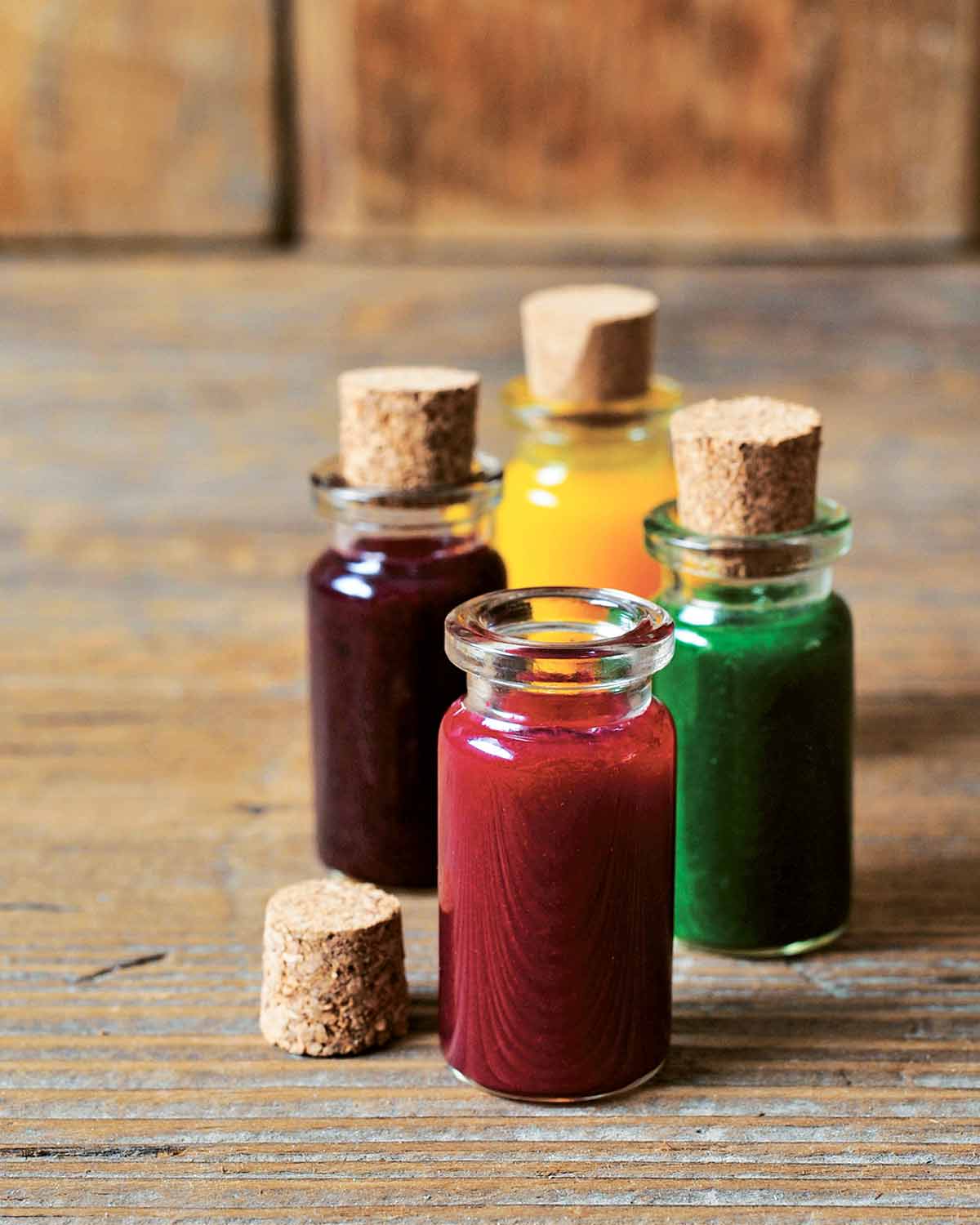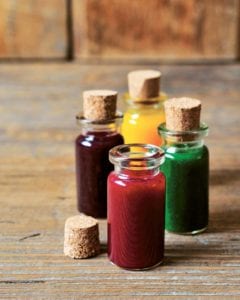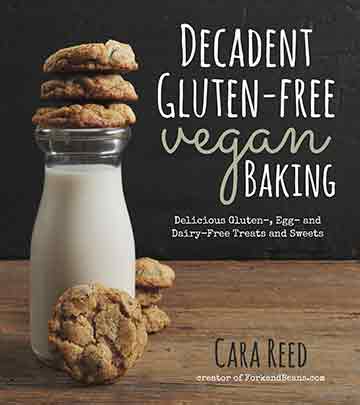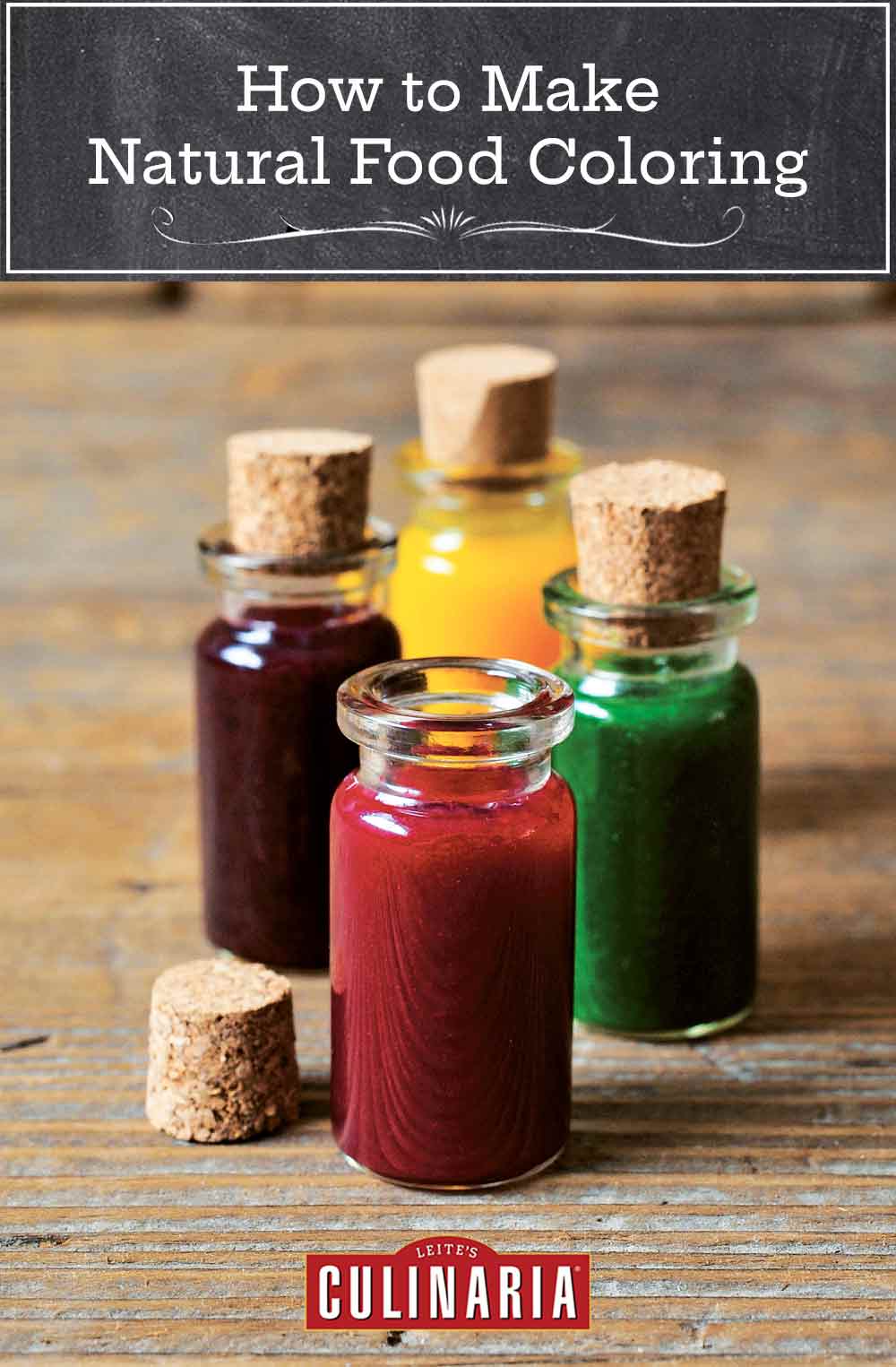
Knowing how to make natural food coloring from scratch is something we’ve been wanting to do for literally years and years and years. And after trying countless different approaches, we finally we have the DIY natural food coloring recipe we’ve been wanting, seeking, and needing. No artificial colors. No preservatives. And no monumental price tag. Just vegetables and fruits and water.–David Leite
Natural Food Coloring FAQs
Keep in mind that when mixed into frostings or icing, natural food coloring will create shades of pastels rather than incredibly vibrant and nearly neon hues. But, on the other hand, these all-natural, one-ingredient colors are kinder and gentler to everyone involved. And there’s something to be said for softness, no?
Yes, to some extent, although it should be minimal. The more food coloring you use, the more noticeable the flavor will be. In some cases, this is desirable, such as with blueberries. However, if the food coloring uses an ingredient that may be off-putting to some, start with a small amount and monitor the flavor.

How To Make Natural Food Coloring
Ingredients
For pink food coloring
- 1/4 cup canned beets, drained
- 1 teaspoon drained beet juice from the can
For yellow food coloring
- 1/4 cup water
- 1/2 teaspoon ground turmeric
For purple food coloring
- 1/4 cup blueberries, fresh or frozen (if frozen, thaw and drain)
- 2 teaspoons water
For green food coloring
- 1 cup spinach, fresh or frozen (if frozen, thaw and drain)
- 3 tablespoons water, plus more as needed
Instructions
- Choose your color below and simply follow the instructions below.
Notes
CHOOSE YOUR COLOR
Pink
In a high-speed blender or food processor, mix the beets and juice together until smooth. Strain if desired. Store in an airtight container for up to 2 weeks in the refrigerator. Add 1 teaspoon to icings, frostings, or batter for starters to impart a pink hue. Add more coloring, if necessary.Yellow
In a small saucepan, boil the water and turmeric for 3 to 5 minutes. Allow to fully cool. Store in an airtight container for up to 2 weeks in the refrigerator. Turmeric can stain, so use a container you don’t mind turning yellow. Add 1 teaspoon to icings, frostings, or batter for starters to impart a yellow hue. Add more coloring, if necessary. [Editor’s Note: Be careful when working with turmeric as it tends to stain whatever it comes in contact with, including countertops and wee fingers.]Purple
In a high-speed blender or food processor, blend the blueberries and water together until smooth. Using a fine-mesh sieve, strain the skins from the mix. Store in an airtight container for up to 2 weeks in the refrigerator. Add 1 teaspoon to icings, frostings, or batter for starters to impart a purple hue. Add more coloring, if necessary.Green
If using fresh spinach, in a small saucepan, boil the spinach in enough water to cover for 5 minutes. Drain, discarding the cooking liquid. If using frozen and thawed spinach, skip to the next step. In a high-speed blender or food processor, blend the spinach and water together until completely smooth. If the mixture clumps or stubbornly refuses to blend, add more water as needed, 1 tablespoon at a time. Strain, if desired, and let cool. Store in an airtight container for up to 2 weeks in the refrigerator. Add 1 teaspoon to icings, frostings or batter for starters to impart a green hue. Add more coloring, if necessary.
Nutrition
Nutrition information is automatically calculated, so should only be used as an approximation.
Recipe Testers’ Reviews
These instructions for how to make natural food coloring are easy to follow and everything came together quickly, each one taking less than 5 minutes (if you don’t count the half hour to allow some of the mixtures to cool). Our color testers included a 10-year-old and an 8-year-old. They swirled the final colors into bright white vanilla yogurt and and the results were delightful. Each color is a pretty hue—soft green, lemony yellow, light purple, and a pale pink that got the most enthusiastic chorus of “Ooooh!” and “Ahhhh!”
A few notes: Our blender must not be as powerful as some as the mixtures were a bit chunky. So we ended up straining each. It was easy to do and added maybe another 30 seconds to the overall time. We had fresh beets and fresh turmeric in the house, so we used those, grating each finely. The lemon yellow from the fresh turmeric is especially bright and fresh and satisfying. (Be aware! Turmeric REALLY stains. Make sure everyone is wearing an apron when playing with the colors.) We had a great time with this simple recipe and definitely will make these colors again.
With the problems of artificial colorings in our food chain, this natural food coloring recipe was a pleasure to try. For the pink, I believe you can use fresh beets that have been cooked and use the cooking water. For the purple, the total time, including clean up, was just 5 minutes. For the green, I used fresh spinach.












I recently made plum jam, for the first time, and it ended up being a pretty red color when finished. I was thinking, while I was cooking it, if there would be a way to use plums to get a red food coloring. I’m not great in a kitchen, but am trying to learn. Do you think using plums would result in a red food color & if so, exactly what would the process be to use this for food coloring? Thank you for the recipes to make food coloring from natural sources 🙂
Hi Vicki, we did not run plums through our testing process so I’m reluctant to guarantee results or try and guess at proportions. That being said, the skins of the plums should yield a beautiful color when simmered in a bit of water. I would play around with amounts to get to the perfect color and intensity.
did you ever try that ? if so how did it come out. I tried the beets, and it came out tasting like beets and i hate beets.
Hmmm. Sorry to hear that, love. We tried it and couldn’t detect beets, although diff varieties do have diff levels of, uh, earthiness, shall we say? Vicki, did you happen to try the frosting using plum? Many thanks, both of you.
For the beet (pink) version, you can also use beet powder. This ingredient is used as a colorant in Indian cooking, and is more concentrated yielding a brighter deeper pink/magenta. I found it on Amazon; it makes a lovely deep red-colored curry when combined with turmeric.
Dona K, splendid! Thank you, thank you, thank you!
Does the flavor of the items come through in the frosting?
Nope, not at all, Kristin!
Hi! I have been making natural bath bombs and my friends were asking for other colors besides my pink. Can these recipes be used for the bath bombs which are stored in the fridge?
Barbara, we haven’t used these colorings in that capacity and so I can’t say for certain but I don’t see why not. Just a heads up, these natural colorings produce paler shades and not the crazy vibrant neon colors that artificial dyes create. If you do use these in homemade bath bombs, kindly let us know how it goes!
I’m pretty late in the game but found this comment and can’t help to chime in. I had a turmeric-based bath bomb and it stains the tub, even with just a wee bit of turmeric, like the author wrote in this three-year old article. BUT, it was easier to bleach away than the neon hues I get from other bath bombs. Still, if it’s a gift, you might want to think twice before giving the gift recipient the burden of having to bleach their tubs. If it’s for yourself and you don’t mind, go for it! Turmeric has been used in ancient Javanee and Balinese spa cultures (like turmeric milk baths with rose petals) and is supposedly good for your skin.
Lovely, Adi! Thank you so much for contributing to the conversation. Wishing you and yours a lovely holiday season…